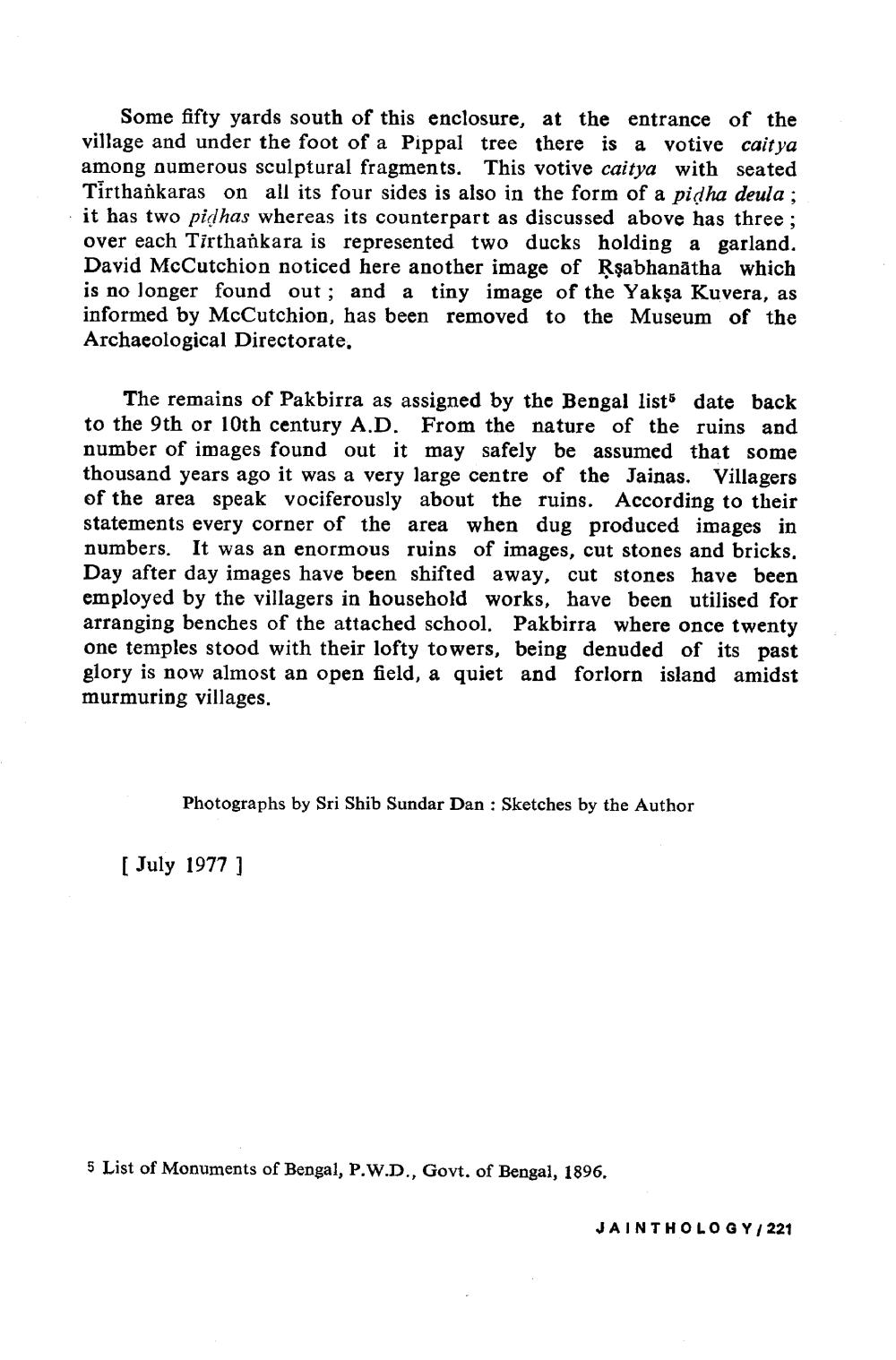________________
Some fifty yards south of this enclosure, at the entrance of the village and under the foot of a Pippal tree there is a votive cait ya among numerous sculptural fragments. This votive caitya with seated Tirthańkaras on all its four sides is also in the form of a pidha deula ; it has two pidhas whereas its counterpart as discussed above has three; over each Tirthankara is represented two ducks holding a garland. David McCutchion noticed here another image of Rşabhanātha which is no longer found out; and a tiny image of the Yakşa Kuvera, as informed by McCutchion, has been removed to the Museum of the Archaeological Directorate,
The remains of Pakbirra as assigned by the Bengal list5 date back to the 9th or 10th century A.D. From the nature of the ruins and number of images found out it may safely be assumed that some thousand years ago it was a very large centre of the Jainas. Villagers of the area speak vociferously about the ruins. According to their statements every corner of the area when dug produced images in numbers. It was an enormous ruins of images, cut stones and bricks, Day after day images have been shifted away, cut stones have been employed by the villagers in household works, have been utilised for arranging benches of the attached school. Pakbirra where once twenty one temples stood with their lofty towers, being denuded of its past glory is now almost an open field, a quiet and forlorn island amidst murmuring villages.
Photographs by Sri Shib Sundar Dan : Sketches by the Author
[July 1977 1
5 List of Monuments of Bengal, P.W.D., Govt. of Bengal, 1896.
JAINTHOLOGY, 221




